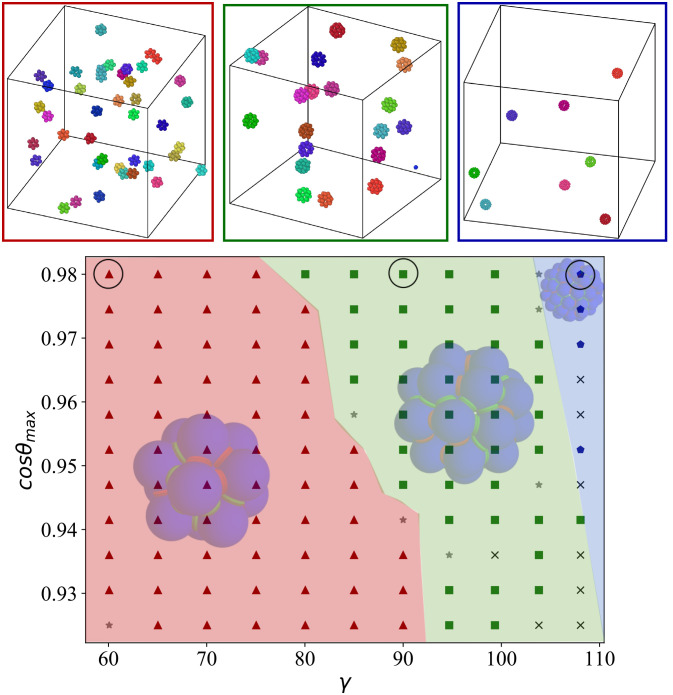Fig. 3.
Top: Snapshots of the final configurations obtained from simulations based on a one-component system (corresponding to the circles in the main diagram). Particles have two types of patches (red and green) and bind via self-complementary interactions (red with red and green with green). In all simulations, cosθmax = 0.98 and the γ = 60, 90, and 108 < SPSDOUBLEDOLLAR > °, respectively, i.e., at the optimal value for the three selected structures. The simulations for the icosahedron and snub cube were done with T = 0.097 and ρ = 0.01, while for the snub dodecahedron, ρ = 0.001 was used. In all snapshots, the yield of the most probable shell is close to 100%. Bottom: Most probable structure formed for different in-plane angles, γ and for different patch width, cosθmax. The triangles inside the red region represent parameters where the most probable structure is the icosahedron. The squares inside the green region represent parameters where the most probable structure is the snub cube. The pentagons inside the blue region represent parameters where the most probable structure is the snub dodecahedron. Black crosses represent systems where only open/incomplete clusters are formed. The gray stars represent systems where clusters are able to close but none correspond to the ones in Fig. 1. Results were calculated for T = 0.097 and ρ = 0.01. Temperature (T) is expressed in units of ε and kB = 1, while all lengths are in units of σ.

